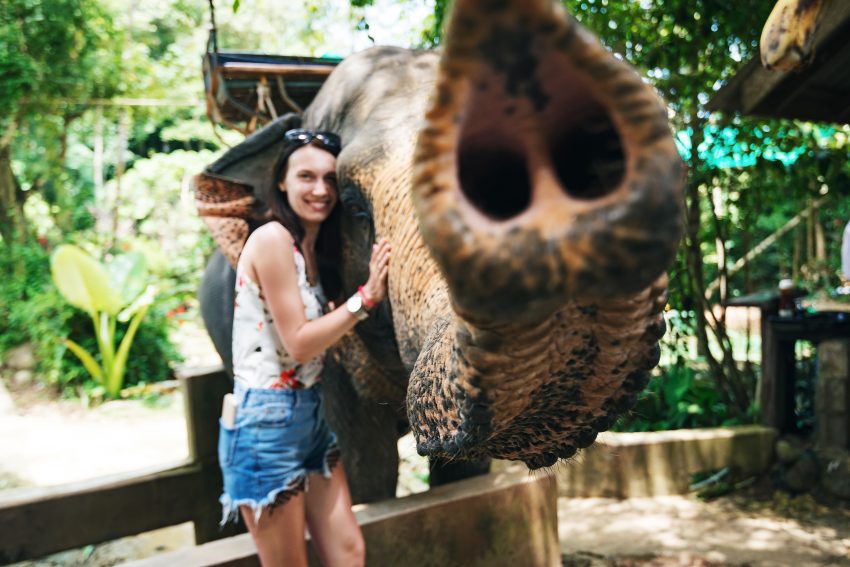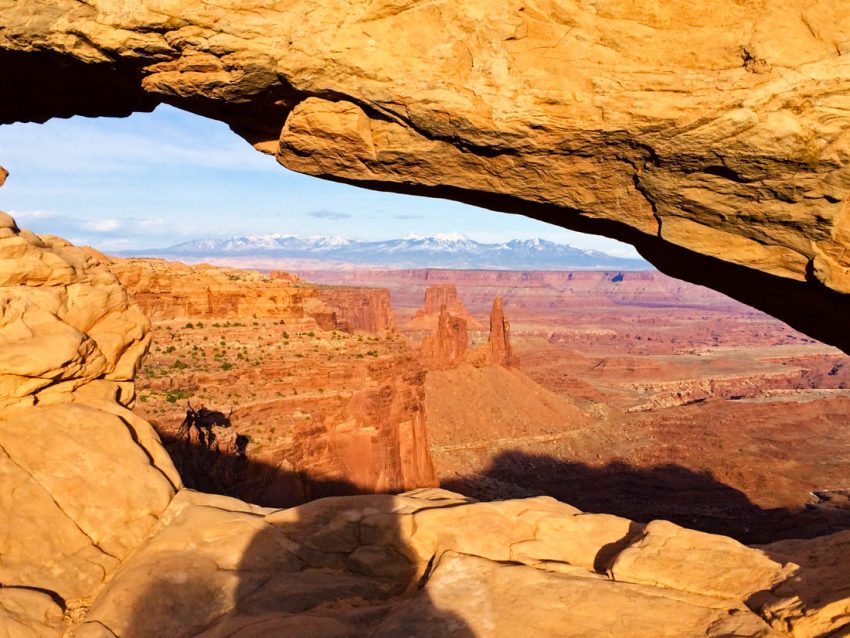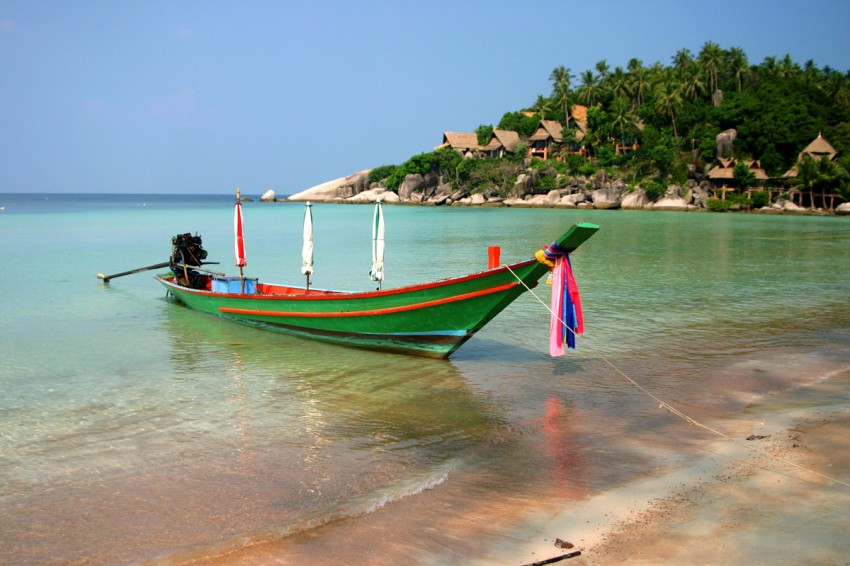Nestled away between Thailand, Vietnam, Cambodia and China, it’s easy to forget about little Laos. But South East Asia’s underrated gem captured my heart when I visited earlier this year. For a country with less than 7 million people, it certainly has a lot to offer.
I have to be honest, before going to Laos, I knew nothing about it. I could barely even pronounce the name (FYI it’s like ‘woodlouse’). But I was easily won over. From the culture capital of Luang Prabang in the north right down to the hippie paradise of Don Det at the southern border, I was super impressed by the diversity on offer and drawn in by it’s relaxed pace of life.
If you’re wondering whether to visit Laos on your next trip to South East Asia, I’ve put together 11 reasons why the answer is yes
An Abundance of Beautiful Waterfalls
Laos is home to some of the best waterfalls in South East Asia, an impressive feat for the regions only landlocked country. The most well-known being Kuang Si Falls in Luang Prabang, where swaths of tourists can be found bathing in the infamous turquoise blue water that flows through triple tiered splash pools.
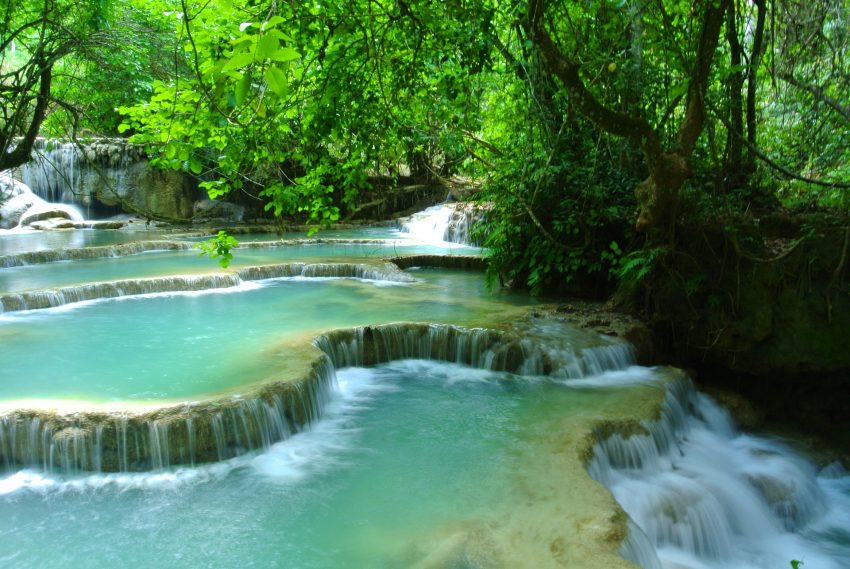
Head further South and the falls become even more spectacular. My favourite experience in Laos was the Bolaven Plateau motorcycle loop from Pakse. Driving through the cool climate of the Champassak highlands was enough of a thrill on it’s own. But the abundance of waterfalls along the way is what really made the trip. This included the country’s tallest waterfall, Tad Fane, where dual streams of water shoots over a 120m high cliff into a basin below. Incredible.
In the very south of the country, near the border with Cambodia, is a record-breaking waterfall. The locals are proud to claim that Khone Pha Pheng Falls is the largest waterfall in South East Asia, although this is measured in volume of water rather than height (who is measuring waterfalls in this way?!). Nonetheless, this 10km stretch of rapids down the Mekong river is a sight to behold.
The Friendliest People You’ll Meet
It’s always the people you meet that make or break a trip. In Laos, they absolutely made it. During my travels around South East Asia, Laotians were some of the kindest people I had come across. In my opinion, it’s worth visiting just to hangout with them.
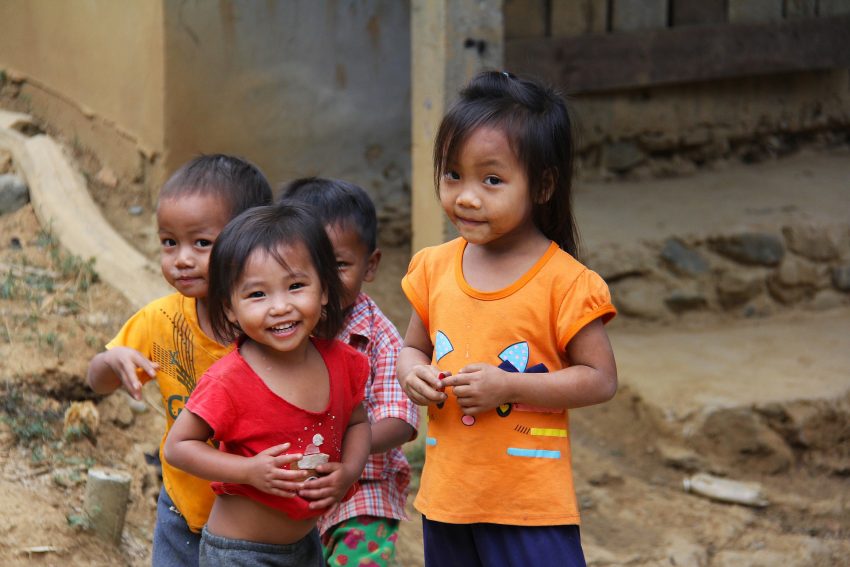
I’d recommend spending some time in homestays. I stayed with a family in the rural village of Tat Lo and for one night felt like part of the family. Switching up an evening of beer drinking for a night playing toy trucks with the Lao children was a great decision. Although a slightly different atmosphere to the usual hostel stay, it’s a nice way to get a little closer to the Lao way of life.
There are also opportunities to converse with locals through teaching or practising English. One such example in Vientiane is not to be missed. Visit Wat Sok Pa Luang at 3pm on Saturdays to meet novice monks from around the city who wish to practice their English. In return for one hour of speaking English, they’ll teach meditation techniques for an hour – not a bad deal.
It’s A Country Steeped in History
Before visiting Laos, I was blissfully unaware of it’s role in major regional conflicts, including World War II, the Vietnam war and its own civil war. If you’re a history nerd like me, there are plenty of opportunities to find out more about the country’s recent history.
The thing that struck me most, was learning that Laos takes the title of the ‘most bombed country in the world‘ following it’s bombardment during the Vietnam war. But, what made this even more harrowing, was to learn that each day people are still killed or injured from unexploded bombs left behind by these conflicts.
I can recommend a visit to the UXO centre in Luang Prabang and the COPE centre in Vientiane, both are organisations that are still helping those affecting by unexploded bombs today. The free visitor centres were opened to help educate the public about the work they are doing and as a stark reminder of the consequences war brings.
There’s Plenty for Thrill Seekers
If you’re a thrill seeker, then have no fear, there is something for you to do in Laos. You need to visit Vang Vieng; the country’s adventure capital. Here you can try your hand at all sort of crazy activities.
Vang Vieng was first put on the map by river tubing. Backpackers have sailed down the river in tractor tire inner tube’s for decades, stopping only to refill at the bars along the way. This has been slightly more regulated in recent years due to a number of fatal incidents, but it still makes for a fun afternoon drinking under the sun as the world passes by. And if you’re interested in more updated ideas, check out this backpacker’s guide to Laos.
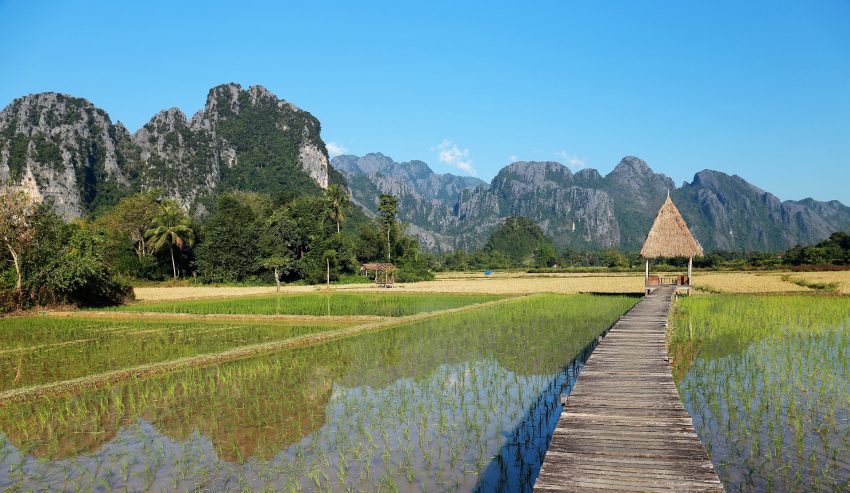
If you’re looking for something a little more adrenaline fueled, Vang Vieng has plenty to offer. Rent yourself a dirt buggy and head off-roading towards the lagoons. Alternatively, try your hand at kayaking, ziplining or even motorized paragliding (apparently called paramotoring).
In Vang Vieng you’ll also find the un-disputed ‘cheapest hot air balloon ride in the world’. Set off at dawn and watch the sun rise over the stunning landscape of Vang Vieng and it’s surroundings.
Experience Age-old Local Traditions
Each morning at the strike of dawn, locals line the streets of the busy cities in Laos for Tak Bat, also known as Alms Giving. This is an age-old tradition where monks collect rice and other amenities from locals who believe it brings good karma and merit towards their next life.
Tak Bat takes place all over the country, but I witnessed it in Luang Prabang which has over 30 temples making it the biggest ceremony in the country. Sadly, I witnessed a few ‘bad tourists’ who intruded on the ceremony instead of watching from afar, make sure you respect this religious ceremony if you’re attending and watch from a distance.
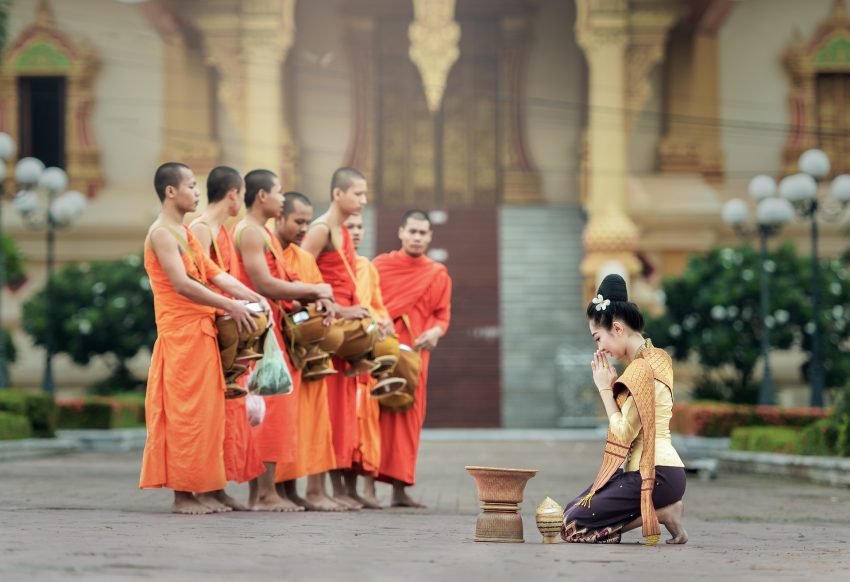
It’s Cheap, Very Cheap
As an up and coming destination in South East Asia, Laos is very cheap to visit. The tourism industry is fairly well established in the main cities of the north, but further south where tourism is still in early stages, I found dorm rooms as low as $2.80 for a night. Given the beauty of the region, I expect the prices will soon rise as more tourists discover this gem so book your flights now! See Travel Costs for Laos here.
Hearty Lao Cuisine

Laos has some great cuisine. A particular favourite of mine being Laap Beef which can be found all across the country. Fresh meat is minced and cooked in a range of herbs and spices before being served with salad. The flavour varies across the country, sometimes having a strong mint flavour, other times a little more spice, but always delicious.
What do you eat with Laap Beef? Sticky rice of course. I was told that Laotians eats more sticky rice than anywhere in the world. I’m not sure how much truth lies in this fact, but based on my own experience, I’d say it’s plausible. Other delicious meals to look out for include Papaya Salad and Khao Soi, which is a noodle soup made with chicken broth and herbs.
No visit to Laos would be complete without trying the country’s national drink, Beer Lao. For me, it was one of the best beers in the region, far exceeding Thailand’s Chang or Cambodia’s Angkor Beer. If you’re interested in something a little stronger, Laotians would love us to throw back a few shots of Lao-Lao, the local rice whiskey which really packs a punch. The phrase ‘go to Laos or go home’ would often prelude a round of Lao-Lao.
World Renowned Coffee
Much like neighbouring Vietnam, Laos is renowned for its coffee. Grown in many of the elevated regions in the country but most notably on the Bolaven Plateau, where the volcanic soil has created perfect growing conditions.
If you get a chance to visit this region I highly suggest visiting some of the plantations, you’ll not only be able to taste the different varieties of coffee, but the owners will usually give an insightful tour of the plantation. F rom growing the beans to roasting them, their knowledge of coffee was unreal.
If the plateau isn’t on your agenda, the towns and cities have plenty of bakeries and coffee shops where you can sample locally grown coffee. The best coffee I tried was a siphon coffee, a traditional brewing method that uses a vacuum and gravity to create the perfect cup of coffee.
Experience a Huge Array of Temples
Laos is a Buddhist country, I rarely had to move far to find a stunning temple. They are always beautifully decorated and plentiful in tradition. The country’s most sacred monument is Pha That Luang, a large stupa situated in the capital, Vientiane, which is accompanied by two temples. Rumour has it that the original monument was formed in the 3rd century to house one of Buddha’s bones that was bought to the city.
The monument has been rebuilt many times since then, the Stupa visible today dates back to the 1930’s after Siamese invaders looted and destroyed the previous 16th century building.
My favourite temple experience in Laos was visiting the ancient temple ruins of Wat Phou. Although on a smaller scale than neighbouring Cambodia’s Angkor Wat complex, these ruins were from the same era and are built in the same Khmer-style.
The biggest draw of these temple ruins? The lack of tourists compared to more famous ruins. At one point, the only living beings in the vicinity were a few goats, a Lao woman selling coconuts and myself – pure bliss.
Wat Phou is located in the Champassak province, near to the old town of Champassak itself, a must-see in Laos. The temple can be found sprawled up the side of a mountain, with man-made barrages lining the walkways. At the top, the well-preserved remains of a sanctuary have been updated with modern Buddha statues for worshippers today.
A Landlocked Country with Countless Islands
Even though Laos has no sea border, it still has a vast number of islands. Mindboggled? I’ll tell you how.
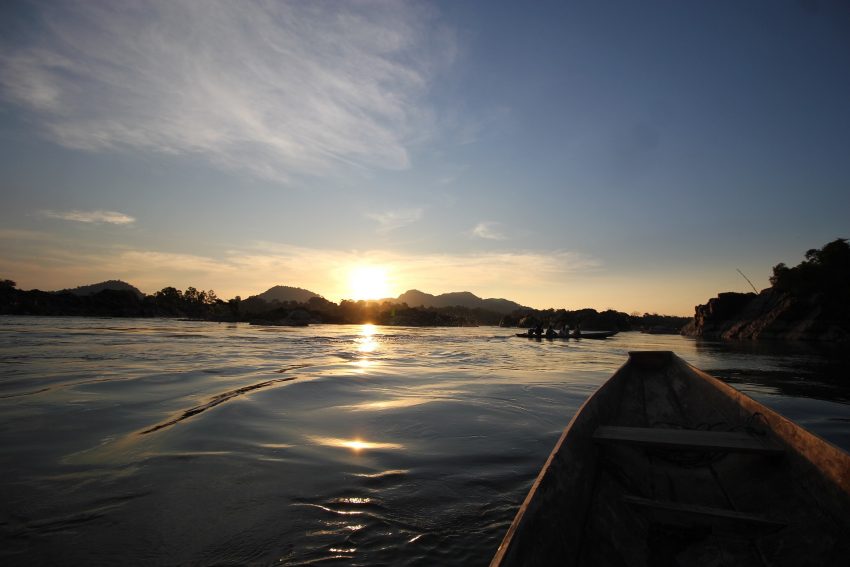
At the very south of the country lies Si Phan Don, which translates as the 4000 islands. This is where the Mekong river spreads itself into many smaller waterways, creating an array of river islands.
Most are so small that you could barely stand on them, but there are three main inhabited islands Don Det, Don Khon and Don Khong. Tourists will usually opt to visit Don Det, this is the main hub with most of the restaurants, bars and guesthouses. Don Det can only accessible by boat, this secluded atmosphere has given the island a real hippie vibe.
A boat tour can take you around the islands’ main attractions but most of your time on Don Det will probably be spent lazing in a hammock watching the world go by. Perhaps you’ll manage to leave your hammock in time to watch the sun set from one of the bars overlooking the river. Whilst the islands have access to electricity, running water and Wi-Fi, you won’t find any ATMs, so you’ll want to fill up on cash before you go or face a long boat journey back to the mainland.
Party The Night Away in Luang Prabang’s Bowling Alley
Bear with me. Luang Prabang’s bowling alley is one of those ‘when you know, you know’ situations, but I’ll try to explain.
Much like the rest of Laos, Luang Prabang see’s it’s bars and restaurant close around 11pm. It’s safe to say that not many backpackers are ready to call it a night by 11pm. So, hoards ascend on the only place that remains open late; the bowling alley.
You’ll not only find bowling and archery, but alcohol, laughing gas and many backpackers who aren’t ready to go to bed – this one is not to be missed.
So, Should I visit Laos?
Yes, yes and yes. I’ve tried to give an overview to the diversity on offer in Laos from the beautiful waterfalls in the countryside to the bowling alley parties, but it’s a country you really have to experience for yourself.
Having only spent 3 weeks there, I’ve only had a small taste of the country. I’m now wondering when my next visit will be, and I hope to see you there too.
Kieren is a traveller from the UK with a bucket list that won’t stop growing. Adventures to date include interrailing through Europe, road tripping the US west coast and backpacking across South East Asia. Kieren writes about his travels at Got My Backpack.

